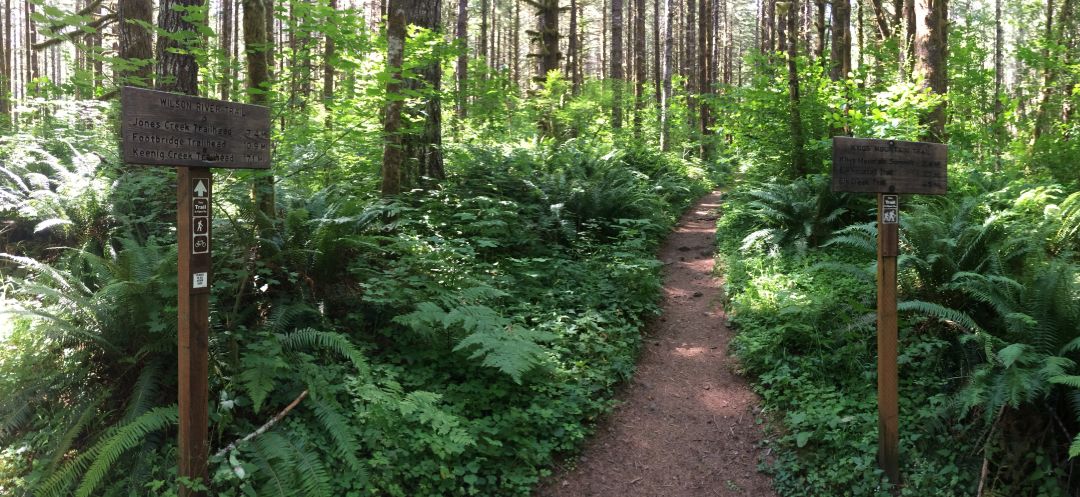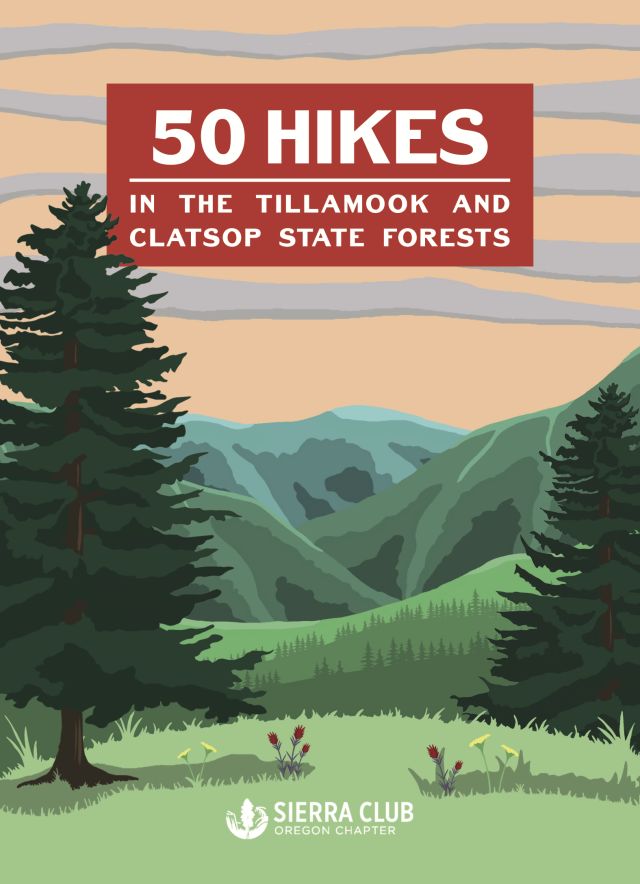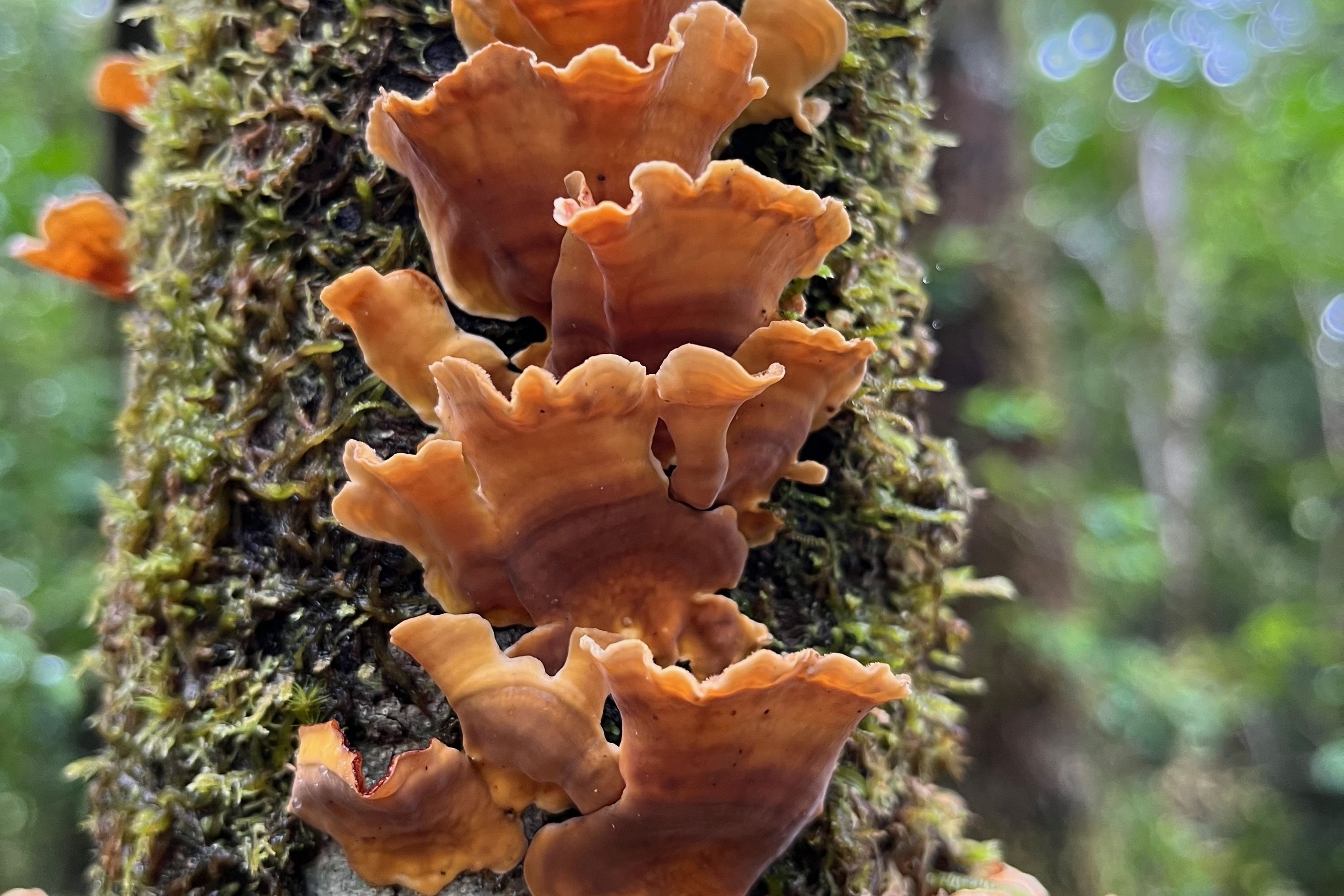This Oregon Guidebook Spotlights Two Coastal Forests

Kings Mountain trailhead in the Wilson River Corridor: hike no. 7 in the Sierra Club's new guide to exploring the Tillamook and Clatsop state forests.
Image: Riley Pittenger
Secluded lakes, harrowing scrambles, deserted rail towns, wildflowers, waterfalls, and groves of old-growth spruce and cedar: these are just a few of the notable treasures in a newly updated guidebook due out March 1 from Ooligan Press. The Sierra Club's 50 Hikes in the Tillamook and Clatsop State Forests is part traditional guidebook, part manifesto on environmental preservation, aiming to inspire in readers an appreciation of public lands—and a corresponding determination to protect the Tillamook and Clatsop State Forests from eager logging companies.
“The first thing an Oregonian can do is to explore these forests," says Chris Smith, a co-author of 50 Hikes and a member of the Sierra Club's Oregon chapter. Through that personal interaction, the hope is that locals "gain an appreciation for them, and an understanding."

Image: Ooligan Press
Authored by a cadre of expert hikers from the Sierra Club, the petite, 200-page book breaks down hikes—from the notoriously difficult Kings Mountain to the short and approachable Steam Donkey Trails—by level of difficulty, nearby amenities, and seasonal accessibility. The updated second edition also offers a detailed history of this wild forest land, including the geological origins of the Oregon Coast Range, historical interactions between Native tribes and Euro-American settlers, illustrations of local flora (like Goat’s Beard and Monkey Flower), and safety advice for the uninitiated hiker.
In the wake of September’s Eagle Creek fire, Smith says more outdoor enthusiasts are heading west to Oregon's misty coastal forests—often overlooked public property that, according to the book's introductory message from the Sierra Club, has managed to remain relatively intact "within a sea of private, industrial timberlands."
Below, find four of Smith's favorite trails—all of which should be accessible as of the book’s release date.
Kings Mountain
Location: 47 miles west of downtown Portland
Distance: 5.4 miles round trip
Difficulty: Very strenuous
According to Smith, this trek provides two things a lot of local hikers look for: awe-inspiring views (of the Pacific Ocean to the west and the Cascades to the east) and a solid, heart rate-raising climb. Depending on the season, wildflowers such as phlox, Indian paintbrush, penstemon, and asters line the trail as you approach the summit where you can rest your burning thighs in a plush meadow.
University Falls
Location: 44 miles west of Portland
Distance: 4 miles round trip, or 6.2-mile loop
Difficulty: Moderate
This family-friendly jaunt features a stunning waterfall without the throngs of people you’d find at, say, Multnomah Falls. You’ll find mystery, solitude, and opportunities for bird-watching: wrens, juncos, bush tits, Swainson’s thruses, and kinglets. That said, be on the lookout for mountain bikers, who also enjoy this area.
The Little North Fork of the Wilson River
Location: 66 miles west of Portland
Distance: 3 miles round trip
Difficulty: Easy
If you want to see what the Coast Range was like before aggressive logging, this one is for you. Giant old spruce trees provide visitors a glimpse of what the forest looked like hundreds of years ago, but also hint at a possible future for these lands if these trees are once again allowed to dominate the landscape. During the summer, wade up the river to explore aquatic and amphibian life—coastal cutthroat trout, coho salmon, Fall chinook salmon, Pacific lamprey, winter steelhead, northwest salamander, coastal giant salamander, and rough-skinned newt.
North Fork of the Salmonberry River
Location: 47 miles west of Portland
Distance: 9 miles round trip
Difficulty: Easy to moderate
This historically fascinating, ecologically critical trail—home to the now out-of-use Oregon Coast Scenic Railroad and one of Oregon's last remaining, healthy wild steelhead populations—is a true gem worth the long, rough drive to this tributary along forest and logging roads. Says Smith: “The main-stem Salmonberry River will be talked about a lot in the next decade. But this fork is extra special.” One reason why: here, in spring, those steelhead can be seen jumping up a 14-foot waterfall toward spawning grounds. Other highlights on this trail include a deserted rail town and tunnels. (Bring a flashlight!)




